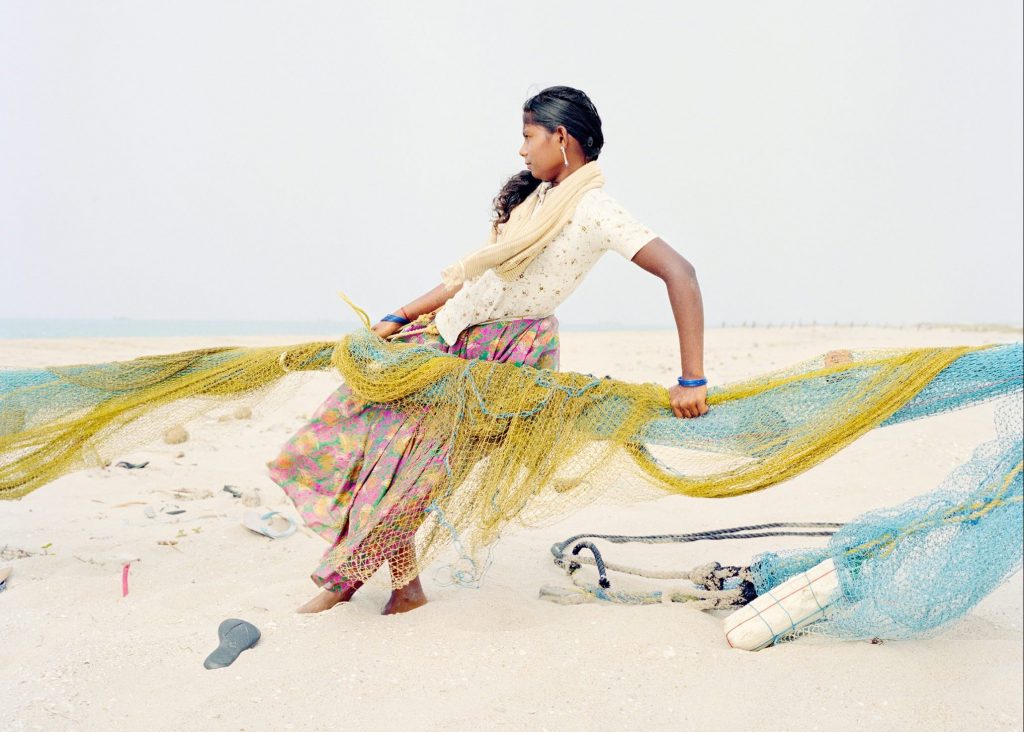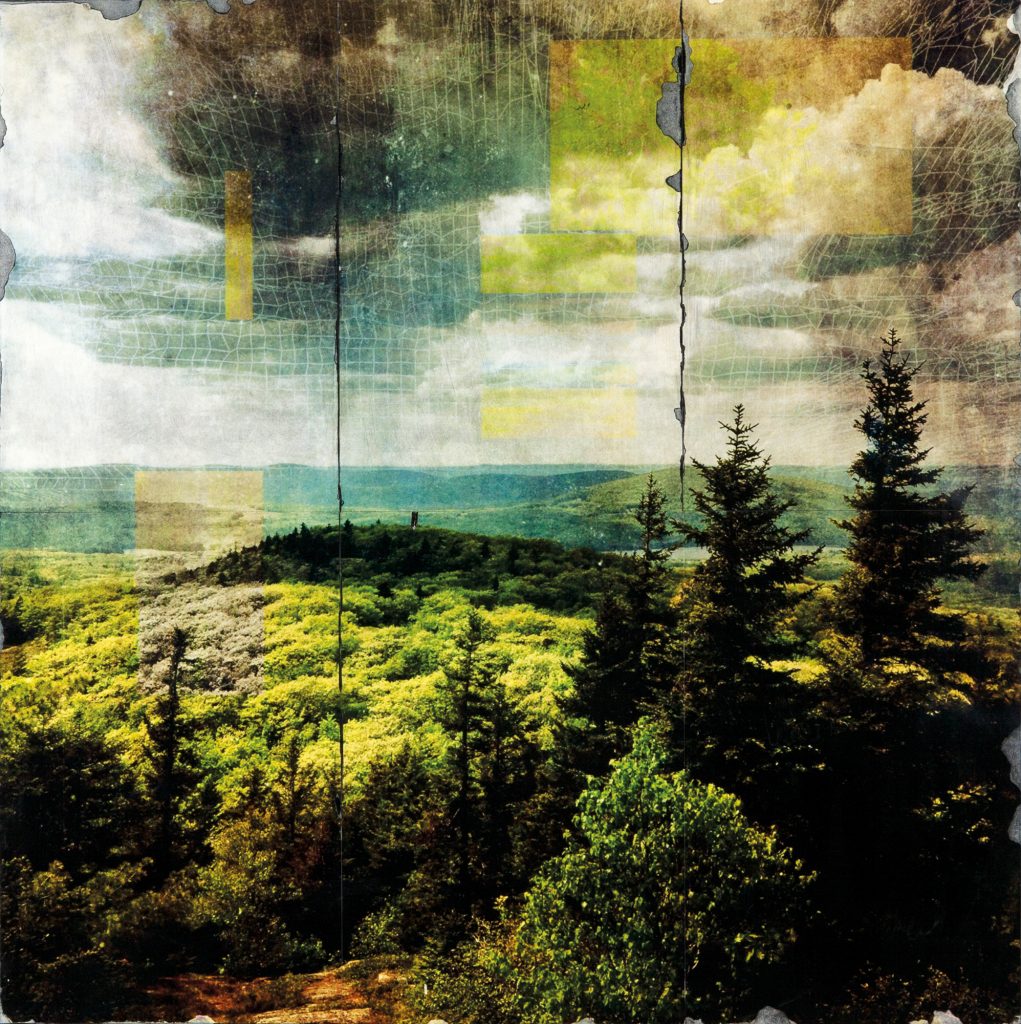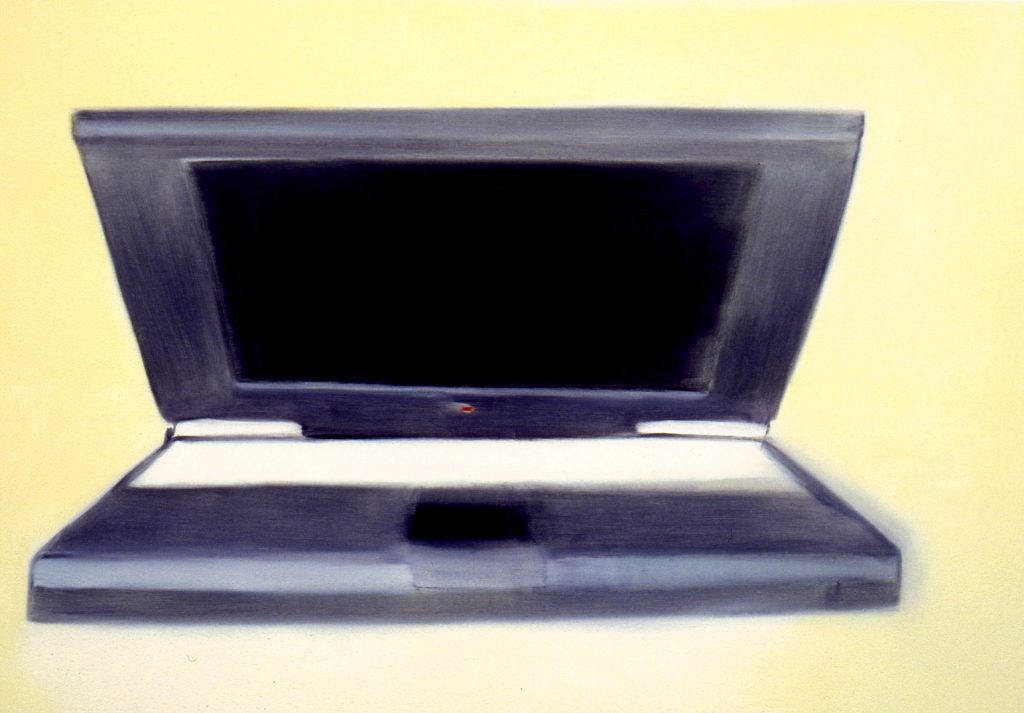Newest from Norwich: Alec Cumming
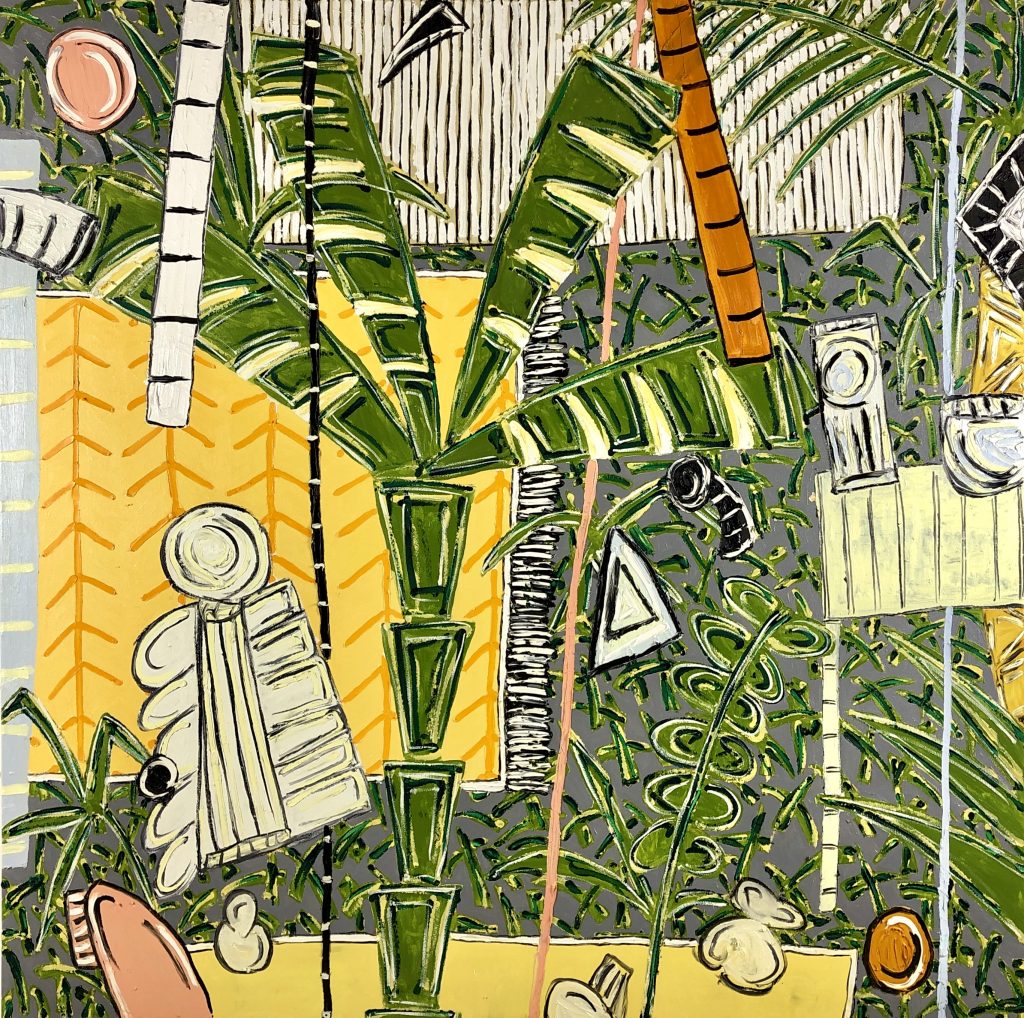
Alec Cumming graduated in 2007 from Norwich University of the Arts with a BA in Fine Art. He spent time working globally and, in particular, has spent considerable time in Delhi, India, where he kept a studio at the Niv Art Centre (South Delhi) for three years. Cumming is, currently, the youngest artist to have presented a solo exhibition with the British Council in India. At the India Art Fair 2016, he was selected as a ‘One to Watch’ artist by a panel including G.R. Iranna and Francesco Clemente. He mounted his first major gallery solo, Perfect Adventures, at The Edit Gallery (Cyprus) in October 2019. His work has been exhibited at venues in Los Angeles, London, New Delhi, Singapore and Paris.
FRONTRUNNER finds out more about Cumming, his practice, and how quarantine has shifted his working routine.

Sensations & Adventures (2020)
Oil on canvas
152 x 152 cm
Courtesy of the artist
Can you give us an insight into your aesthetic?
The works I create need to be honest, to myself and to the style. For a really long time, I was very strict on trying to force my paintings to be abstract by nature and void of narrative within its subject matter. This was prior to me living in India and before I really had the chance to explore other aspects of the world. I’ve come to terms with the fact that my works can have a narrative, that they can have suggestion to things that have some tangibility in the real world. Pots, drinks, swimming pools, palm trees, gardens and architecture are all figurative elements visible in my work, although the beauty of it is [that] these can be viewed by audiences differently from all over the world. When I look back at my old works, you can see elements of this within, which I would never have realized at the time of their creation.
My process comes from taking things and places that visually excite me and using them as tools to vocalise my paintings. I’m not trying to represent them, but I am trying to get a sensation of them. It is like capturing a moment, that split second you walk out into a sun-soaked garden and your eyes are bleached by the sun. As you start to focus, these forms and the object of your surroundings come into view. Light has always had an effect on the work, wherever I have been the light in those places has changed the way I react. Over time, I’ve become more interested in certain aspects of light from the Mediterranean, California, India and Sri Lanka. There’s an element of saturation with the strength of the light that makes everything more vivid, almost like a vibrance filter. Almost as if the light itself is resonating off the eye and back again. I want the viewer to get into my paintings in the same way, to feel that sensation of movement of light.
I’ve explored the idea of language within my work. I want my paintings to have a sense of lyricism. When I was living in India and working in a studio there, I had this great group of other artists who had studios upstairs. We would often congregate for chai, they would sit and chat in English (for my benefit; I was still new to Delhi and had yet to learn Hindi), but invariably they would start talking amongst themselves in Hindi. I sat and listened. I would take great pleasure in listening to the rhythm and a sounds of a language I had no understanding of; there was this great feeling of play and listening to friends chatting away, but not knowing the context and subject matter. Over time, I learnt words and phrases in Hindi (and gradually got better!) This made it even more interesting; I would pick the words to and through this develop my own understanding of what was going on within the conversations. It made me think about my paintings a lot, this idea of having object and forms within the work that have some grasp on being something recognisable. Through these markers or triggers, the viewer absorbs their own narrative. It’s that playful nature unfurling as you navigate the painting.
I spend a lot of time drawing whilst I’m away from the studio. When I return I take these drawings and keep them to one side almost as a visual dictionary to refer back to. Although they are always there I’m not trying replicate the drawing but I use them to search for visual phrases within the compositions. Although non-figurative, I feel my work has a presence of the figure within them. There are certain things that I do to may paintings that give the viewer a stepping zone out of the picture, almost as though they are on a lintel or ledge within the painting, but still looking in further.
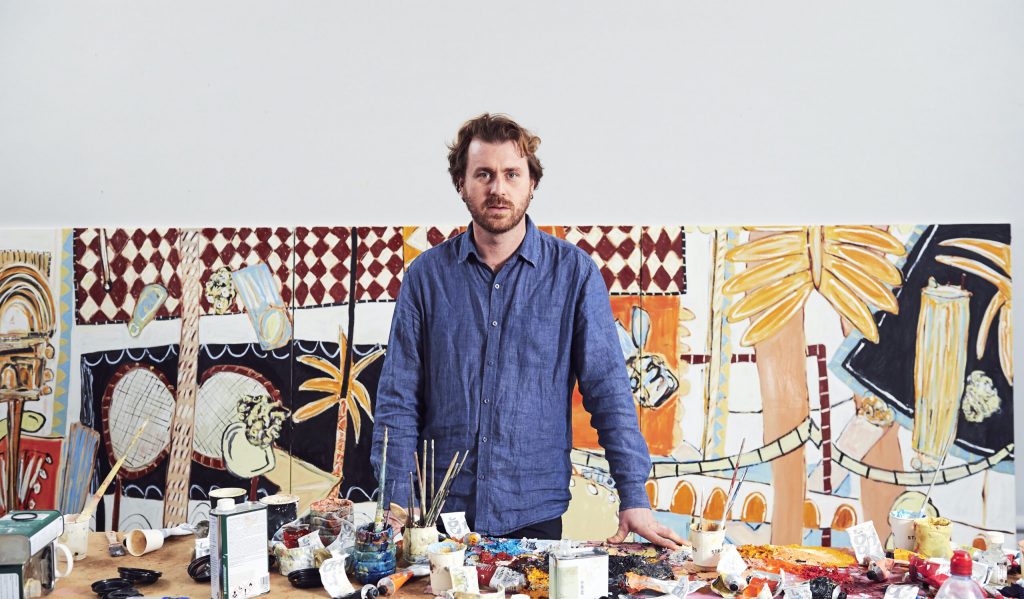
Which other artists inspire you, and why?
It’s not always a case of being inspired by them visually, but often about the concepts and ideas that drive the way they work that has inspired me. So often it ends up being about the way they talk about the work they are making rather than the actual work. Robert Motherwell, Philip Guston and Howard Hodgkin had real impacts on me in this manner. Roger Hilton inspired my really early development in terms of style with his use of line and honest drawing. He also helped me to come to terms with the idea of being inspired by other artists and being okay with drawing on influence from other artists. He’s quoted to say, “That to make great paintings you have to get out and look at other great art”.
There is also a whole lineage of artists from that time who inspired me early on and to this day, including the abstract painter Alan Davie. His lyricism within the work is truly masterful, he promotes this feeling that his brush work and the way the paint ‘dances’ across the surface, almost like he is painting sound. When I was in India I discovered an Indian master, K.G. Subramanyan. His use of narrative and storytelling within his work made me think a lot about how I want people to read my works. His work remains a constant resource to me. David Hockney has the ability to capture his surroundings in such a pure way, there is a certain crispness to his work that I enjoy to absorb. More recently, contemporary artists I have been really excited by include Rose Wylie, Jonas Wood, and Eddie Martinez.
How has your personal history influenced your work?
I went to Norwich City College and studied a BTEC national diploma in Fine Art at 16 before going to the Norwich School of Art and Design in 2004. It was a great warmup into arts education. It felt like being at art school; you had the freedom to explore ideas and were exposed to some great teaching styles very early on. One tutor said that the most important thing I could do was, “Stick to [your] guns, be honest and make the work you believe in.” This has been something that I have always tried to abide by ever since.
I started working with Gallery Art 18/21 in Norwich, as they wanted to represent me and promote my profile. The first exhibition with them was at their gallery in Norwich when I was 22. It was well-received and sold out. It was at that point I was introduced to Alan Wheatley Art (a gallery in Mayfair in London). They wanted to show my work in June 2008. I remember it being February and I had sold all the paintings I had, but I worked so hard to make all the work so I could pull together my first solo show in London. I did it just in time, worked day and night to create this whole exhibition. When we hung the show, some of the art works were still wet.
I was approached by a client of the gallery, a gallery owner from Jaipur who was really keen on the paintings and wanted me to come to India to make work in there for three months. He would pay for everything, in exchange for three works. At the time, India hadn’t been on my radar as a place that I would visit and take influence from, but this visit to India really scratched the surface of something. When I returned to England after this time, all I could think of was returning to India to revisit some of the things that had excited me there. It was that second visit that resulted in a three year-long stay. I never went to specifically paint India or Indian objects or spaces, but when you find yourself surrounded by something, you naturally become responsive with it and it filters in. Working in India had a massive effect on the way I approach my paintings.
In the last few years, I’ve been working and exhibiting in LA and Cyprus. Once again, my work has had place affect it and change the way I look at the world around me. I have started to reference more objects that surround me, plants, swimming pools, gardens, fabrics, rugs. To sum up, I feel I have always tried to seize opportunities that have presented themselves. Making art is about getting your work out there and showing it. That’s part of the process for me and luckily I have always really enjoyed showing my work.
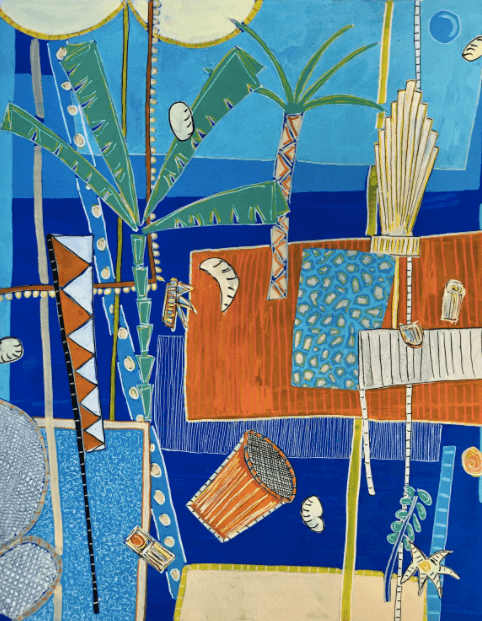
Gilded Beachside Moments (2018)
Posca on paper
63 x 50 cm
Courtesy of the artist
In what ways has the locality of Norwich effected your work?
I decided to stay in Norwich after art school, which was quite a big decision to make. A lot of people – my contemporaries – were leaving for London at the time for the obvious reason that to succeed in the art world, they needed to position themselves within the capital. I have always considered that I don’t necessarily need to do that; living somewhere like Norwich (just a few hours from London), I felt it was still accessible, you were still able to get to see current shows and have an idea of what was happening. For me, the most important thing was to able to have an affordable space to work and to be able to afford myself time to work on my paintings. If I were to move to London, there wouldn’t be the time to commit wholly to my work. Financially, I had made that decision to make Norwich my home, which is a great place to make art. Norwich is an extremely creative city, which for a relatively small city has a busy artist community.
We live in a world now where I feel opportunities are not directly linked to place. The internet makes the art world much smaller, people no longer need to walk into galleries to see great art. It is right there online. Of course, it is still important to be able to go and see art in person, and physically interact with art, but the broadness of discovery is so much greater than it used to be. I believe this highlights the importance of creative freedom much more, it opens the playing field which enables contacts to find you. An example of this is my recent work with The Edit Gallery in Limassol, Cyprus. I’ve been in several group shows and had a solo exhibition with them last October, but I’d never met them or been to Cyprus when they’d seen my work as they discovered me through my online presence with Saatchi Art.
How has quarantine life impacted your daily routine as an artist? Has it impacted your painting?
The process of making art for me has always had a solitary nature. I am often spending days on end just going to the studio everyday by myself (and followed by my trusty collie, Gus). Initially, the day-to-day of working on my art pretty much stayed the same. The biggest impact was that any exhibitions or art fairs that I had planned for the foreseeable were postponed. I have had to get better at my digital and online presence to make sure I am up to date posting art works and making them available online. As the first few weeks went by, initiatives emerged that I was able to get behind. One big part of this was the Artist Support Pledge, an amazing initiative set up by artist Mathew Burrows. The Artist Support Pledge posts work on social media that cost no more than £200 and once the artists has sold £1000 worth of their work, they then purchase a work for £200 from a fellow artist involved in the Artist Support Pledge, creating a chain to support the artistic community.
Another really great initiative was set up by The Other Art Fair. Knowing that the art fairs that they had planned for 2020 would most likely not be going ahead, they set up The Other Art Fair Online Studios. It’s a platform for all artists who were due to exhibit in person at the art fairs, which could be promoted to wider audiences on The Other Art Fairs digital platforms.
The COVID-19 [pandemic] has changed the way in which you try to get people to engage with your work. Social media has become a powerful tool, even more so now. I am continuously learning and developing new ways to get people to see my art. It’s important that as the art world changes and moves forward that we as artists are going along with it. Not catching up with trends, but in sync and moving at the same pace. I see the future of the art world ahead of quarantine not as a worry or fear of how we will survive, but as an exciting, evolving adventure. It also presents fresh opportunities to work together to improve the arts community as a whole.
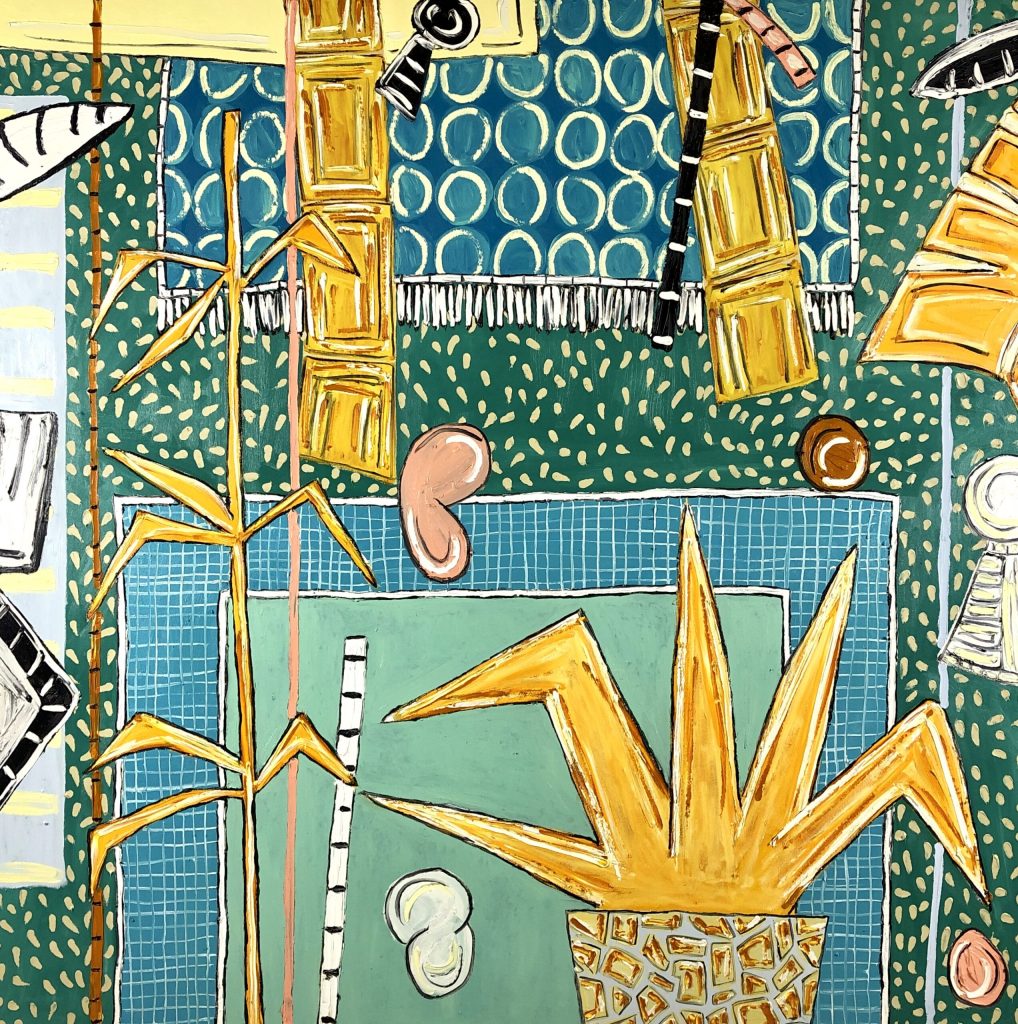
Summer Dreamin’ Light (2020)
Oil on canvas
152 x 152 cm
Courtesy of the artist





